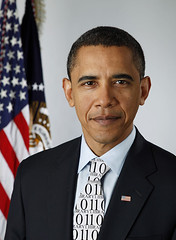 Some people still believe that Saddam Hussein was behind the 9/11 attacks, even with substantial evidence to the contrary. AlterNet recently reported on a sociological study that provides insight into how some people rationalize such false information:
Some people still believe that Saddam Hussein was behind the 9/11 attacks, even with substantial evidence to the contrary. AlterNet recently reported on a sociological study that provides insight into how some people rationalize such false information:
Of 49 people included in the study who believed in such a connection, only one shed the certainty when presented with prevailing evidence that it wasn’t true. The rest came up with an array of justifications for ignoring, discounting or simply disagreeing with contrary evidence — even when it came from President Bush himself.
“I was surprised at the diversity of it, what I kind of charitably call the creativity of it,” said Steve Hoffman, one of the study’s authors and now a visiting assistant professor at the State University of New York, Buffalo.
The voters weren’t dupes of an elaborate misinformation campaign, the researchers concluded; rather, they were actively engaged in reasoning that the belief they already held was true.
Responses to the 9/11 commission’s finding that there was no link between Hussen and 9/11 included:
“Well, I bet they say that the commission didn’t have any proof of it, but I guess we still can have our opinions and feel that way even though they say that.”
Reasoned another: “Saddam, I can’t judge if he did what he’s being accused of, but if Bush thinks he did it, then he did it.”
Others declined to engage the information at all. Most curious to the researchers were the respondents who reasoned that Saddam must have been connected to Sept. 11, because why else would the Bush Administration have gone to war in Iraq?
Connecting 9/11 to the current health care debate, Hoffman said:
“I do think there’s something to be said about people like Sarah Palin, and even more so Chuck Grassley, supporting this idea of death panels in a national forum….[They] kind of put the idea out there, but what people then do with the idea … ” he said. “Our argument is that people aren’t just empty vessels. You don’t just sort of open up their brains and dump false information in and they regurgitate it. They’re actually active processing cognitive agents.”
Andrew Perrin, another one of the study’s authors, provided additional commentary:
“I think we’d all like to believe that when people come across disconfirming evidence, what they tend to do is to update their opinions,” said Andrew Perrin, an associate professor at UNC and another author of the study.
That some people might not do that even in the face of accurate information, the authors suggest in their article, presents “a serious challenge to democratic theory and practice.”
“The implications for how democracy works are quite profound, there’s no question in my mind about that,” Perrin said. “What it means is that we have to think about the emotional states in which citizens find themselves that then lead them to reason and deliberate in particular ways.”
Evidence suggests people are more likely to pay attention to facts within certain emotional states and social situations. Some may never change their minds. For others, policy-makers could better identify those states, for example minimizing the fear that often clouds a person’s ability to assess facts and that has characterized the current health care debate.





